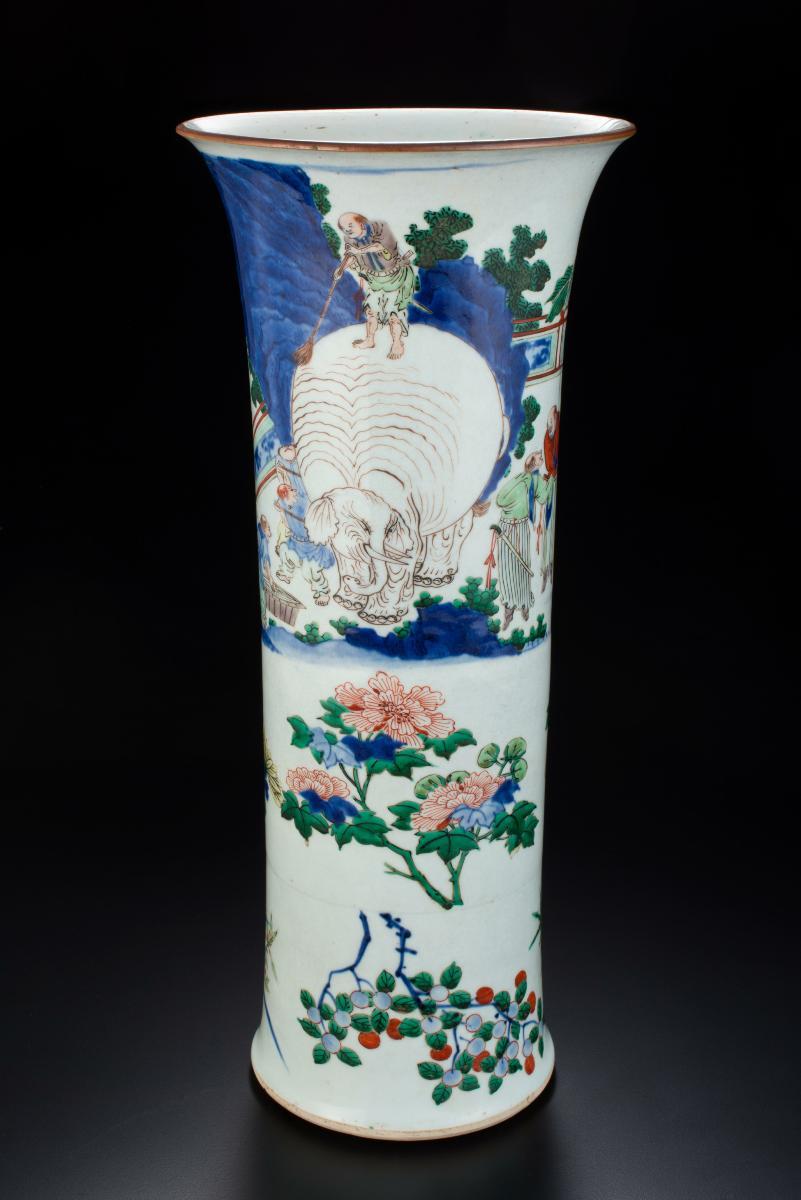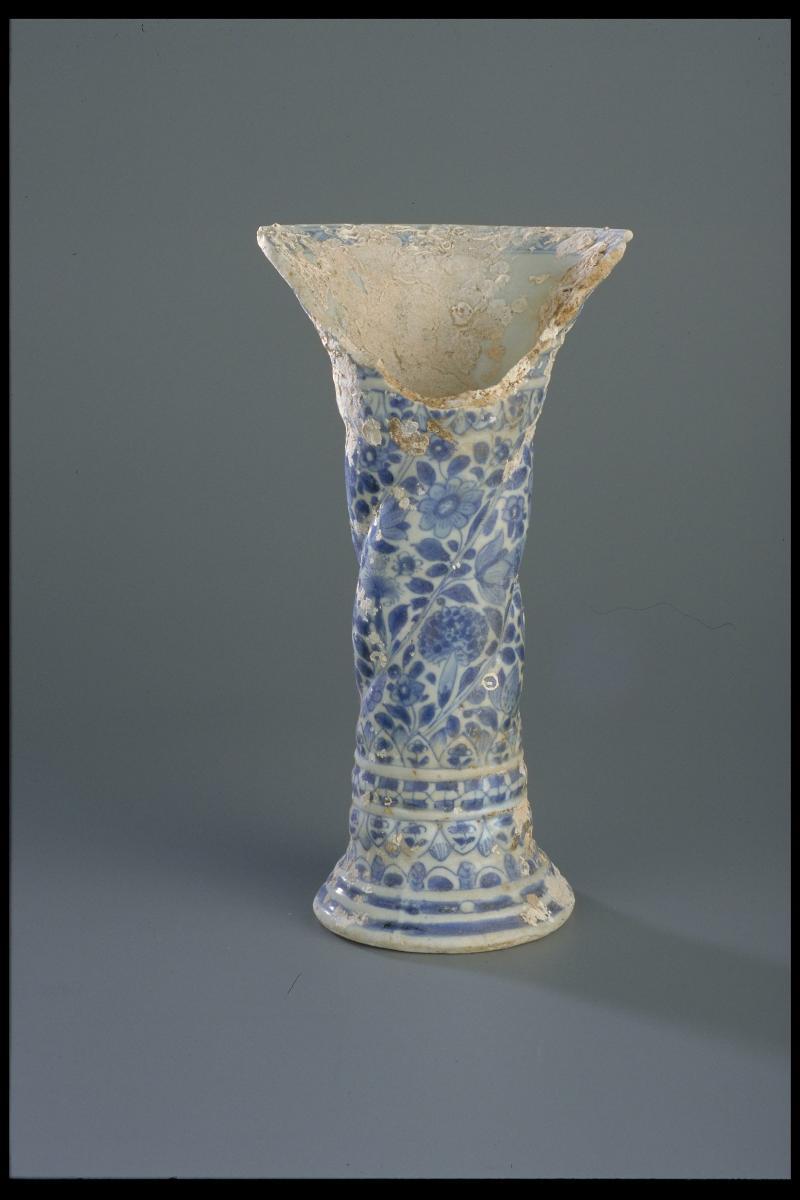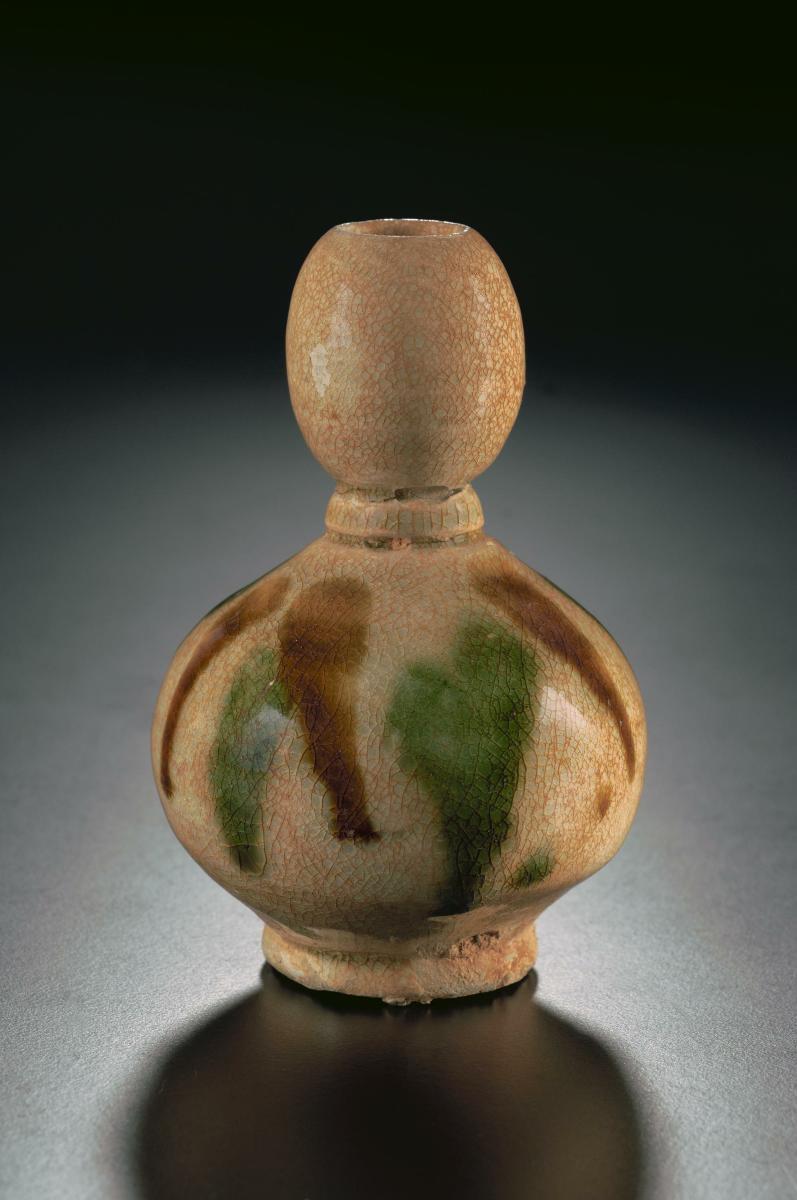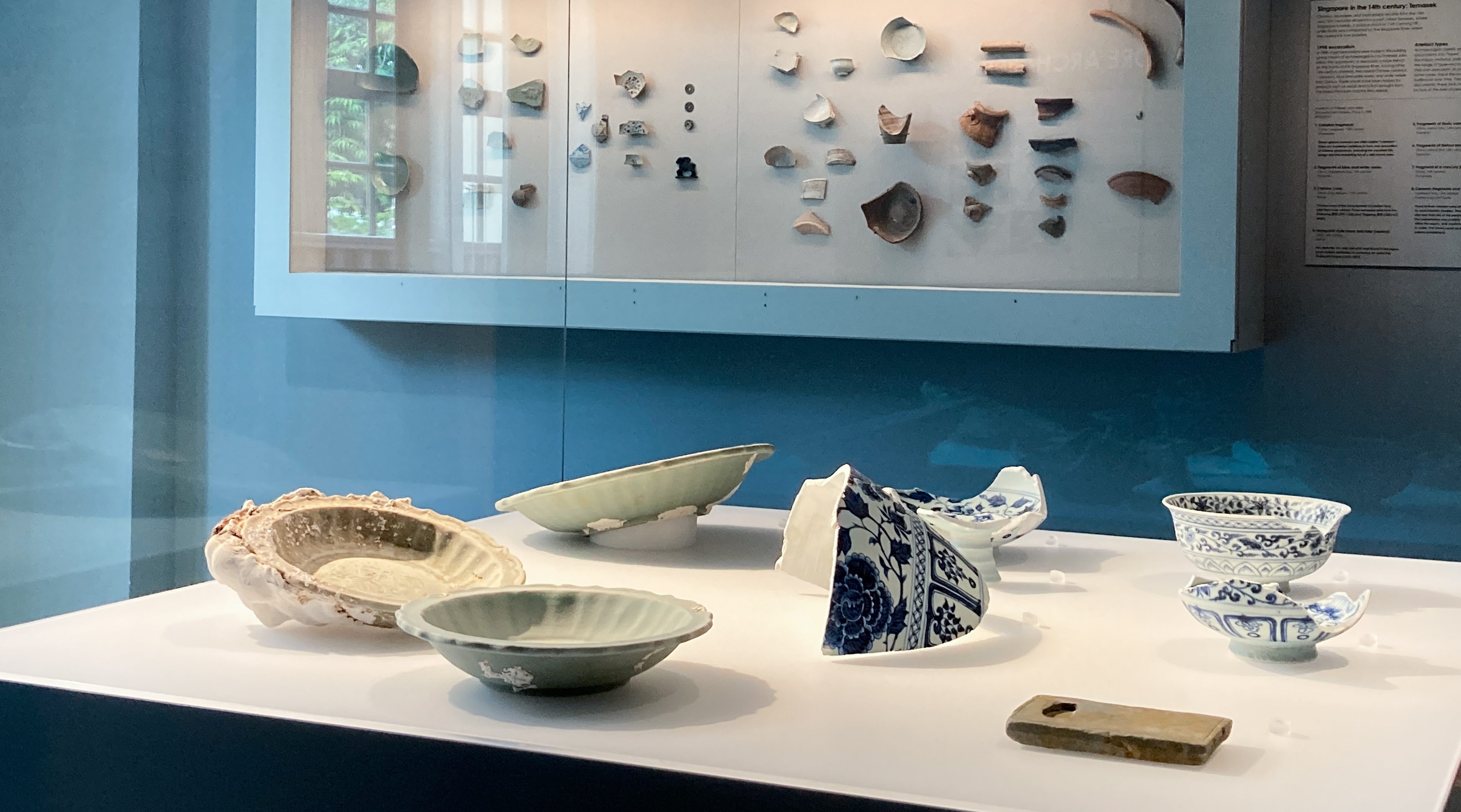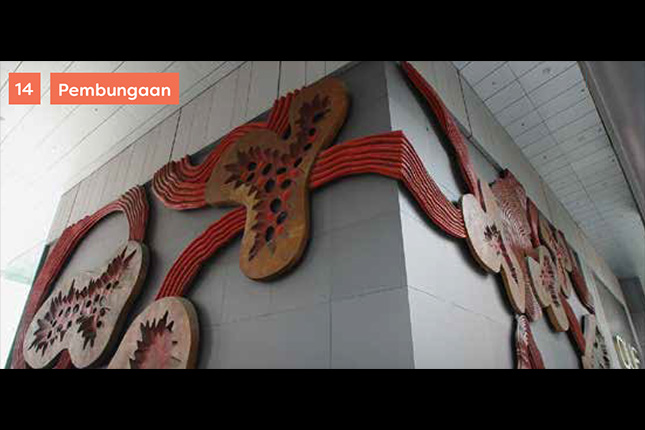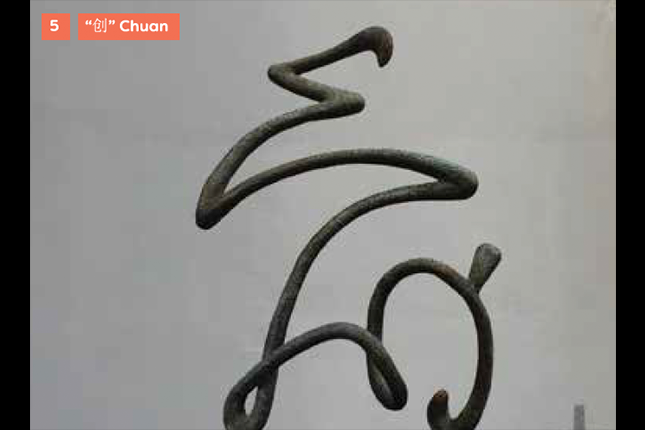This vase is inspired by the shape of the 'gu', an archaic bronze beaker. The 'wucai' ('five colour') overglaze decoration on this vase is divided into three sections. The top section is painted with a scene of four people washing a white elephant. The elephant is symbolic of the birth of Buddha. This scene is probably derived from the Nirvana Sutra, which describes blind men touching an elephant. The Chinese term for elephant, 'xiang' is possibly a pun on the same-sounding term for 'illusion'. This scene has thus been interpreted as 'sweeping or washing away illusions.'The other two decorative bands depict floral sprays of peony, chrysanthemum, morning glory and orchid with lingzhi and citron. These represent good fortune, longevity, success, integrity and friendship.




